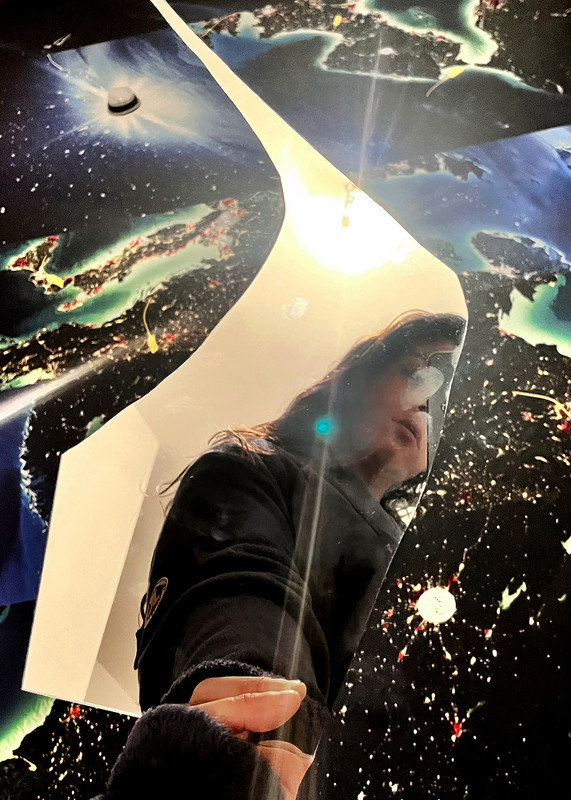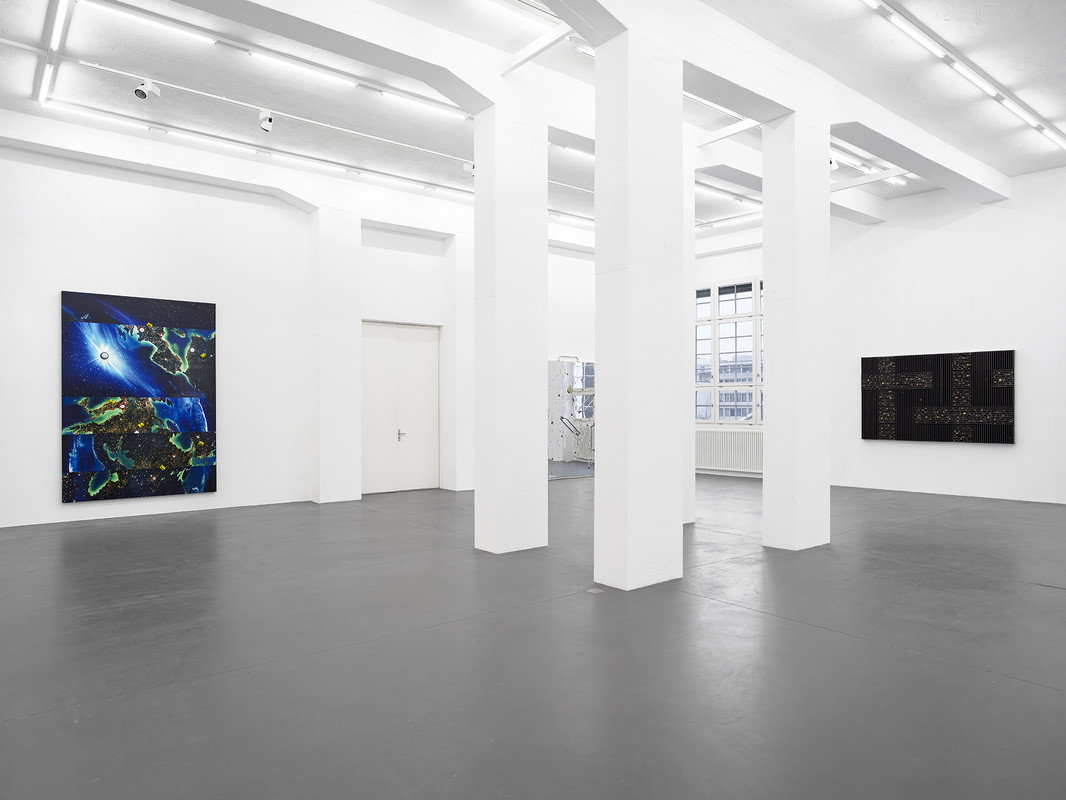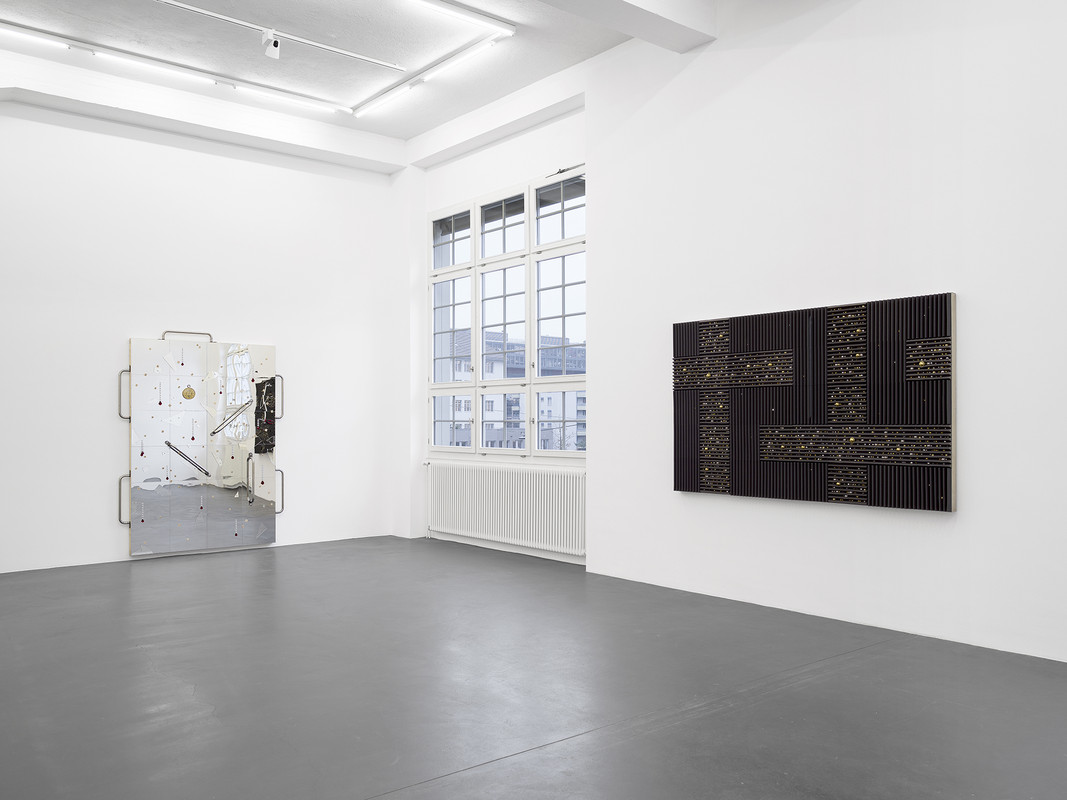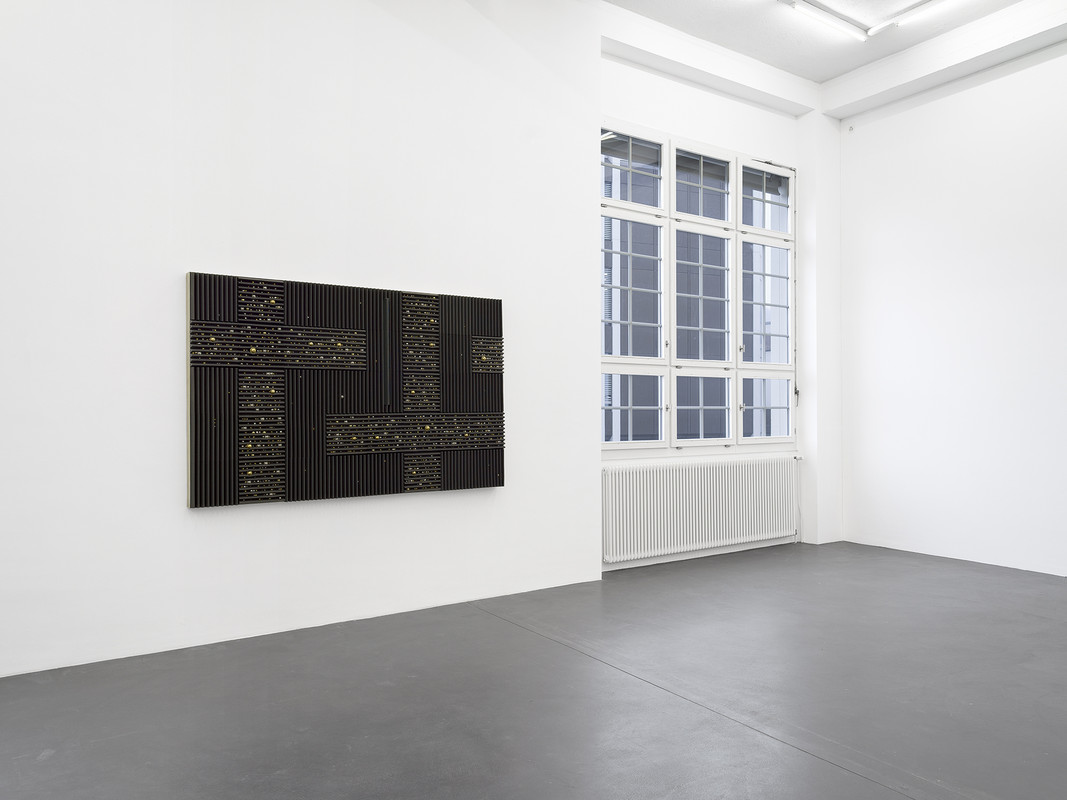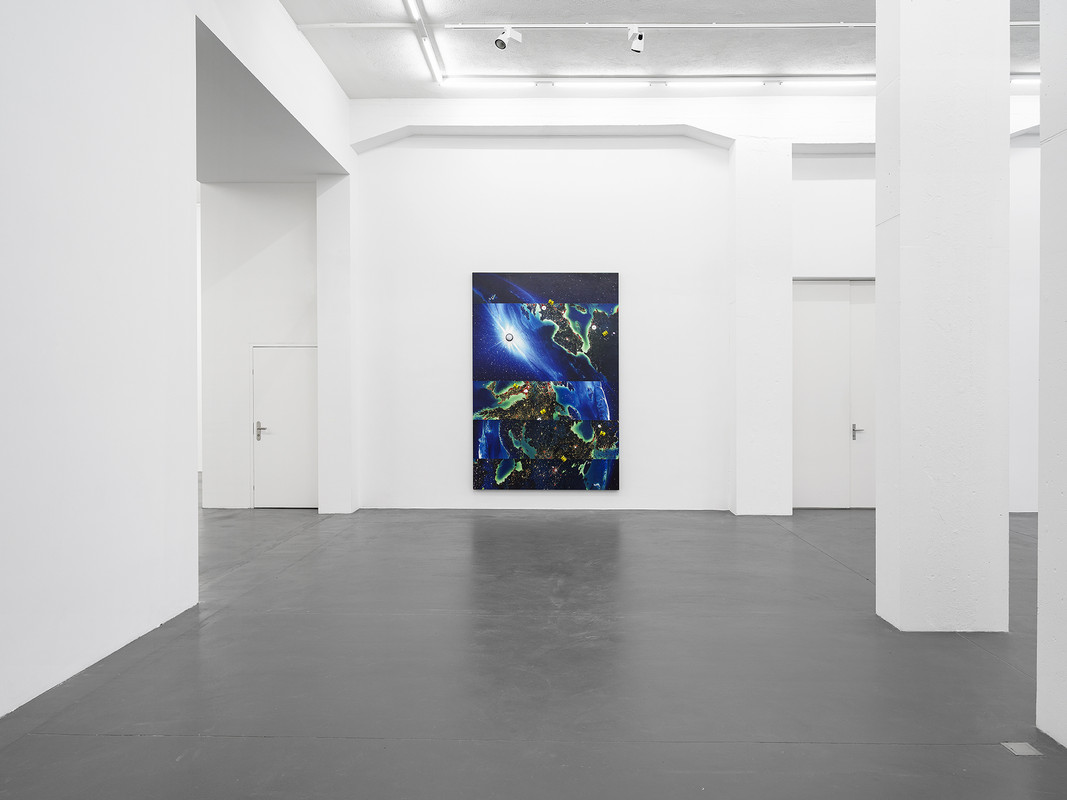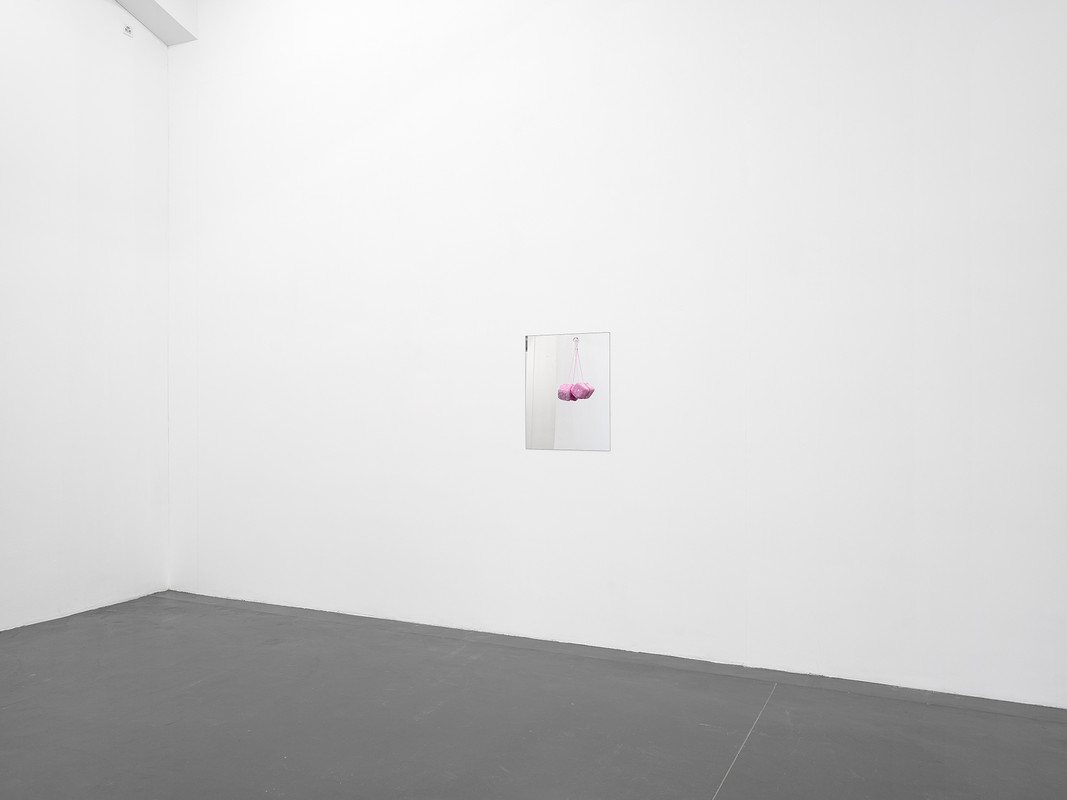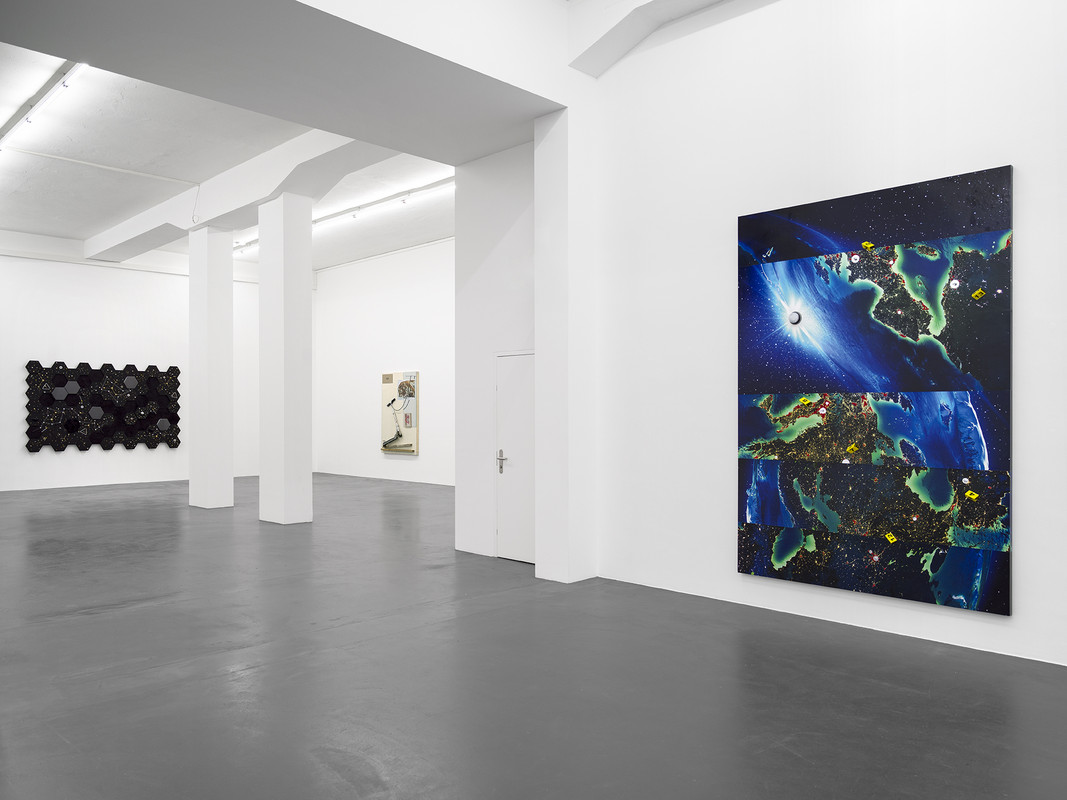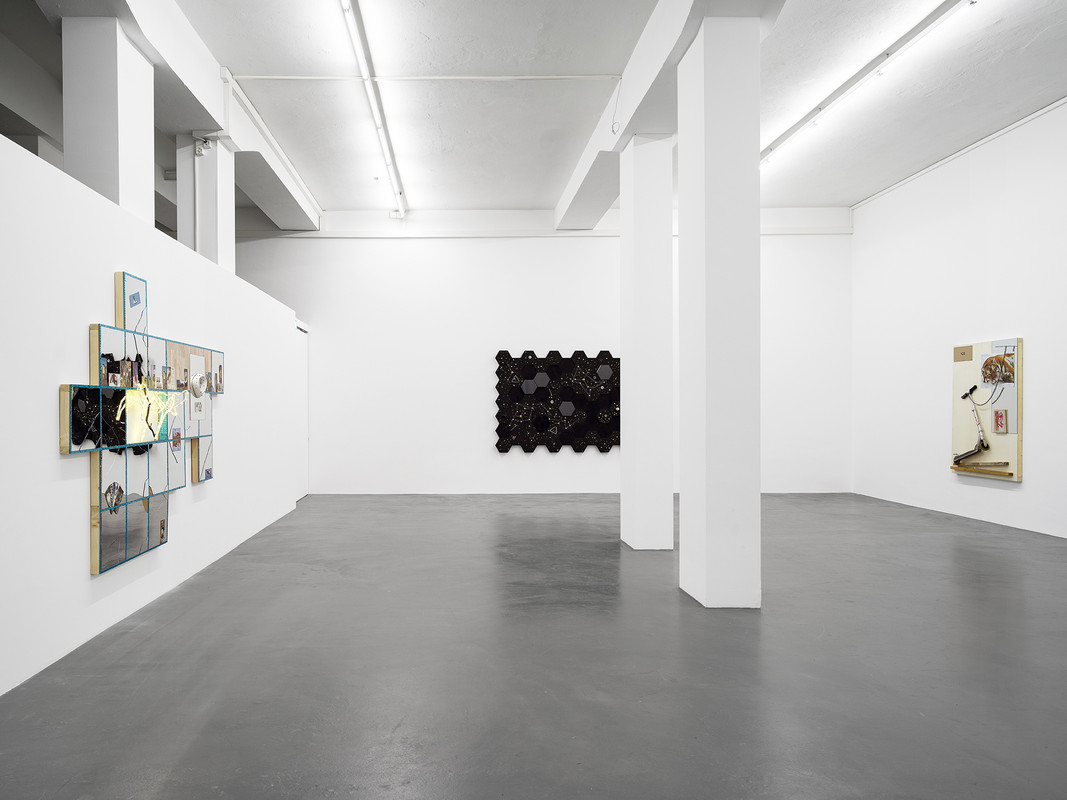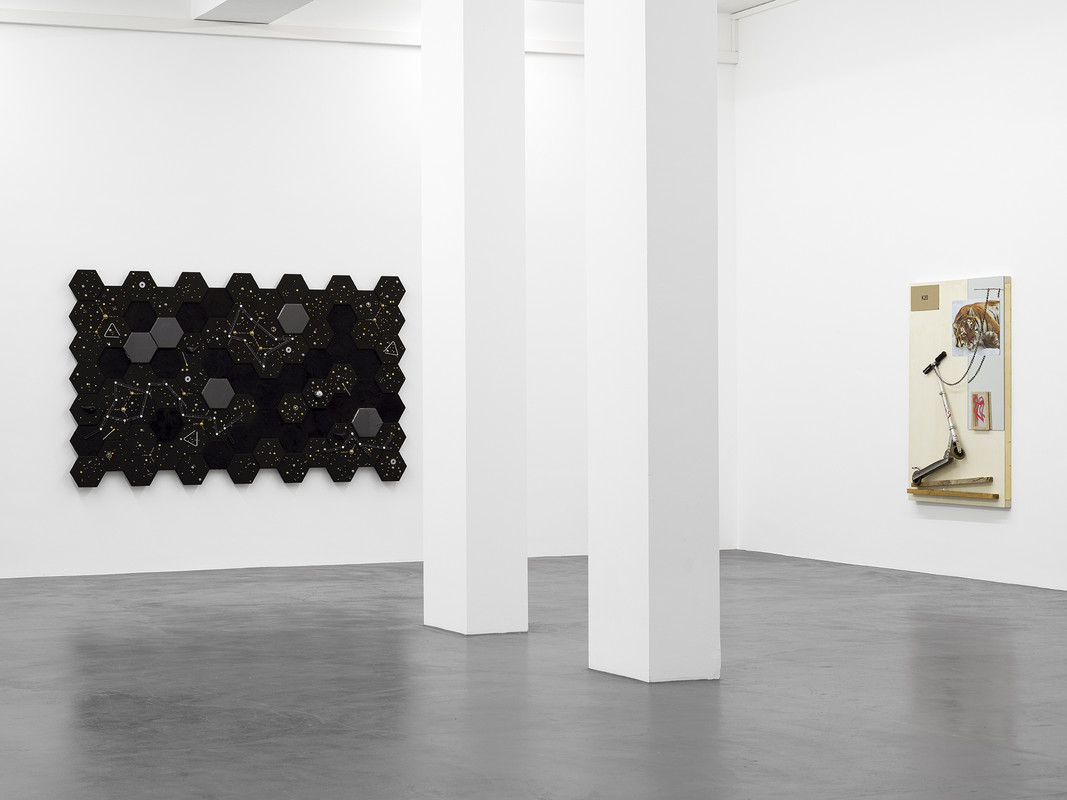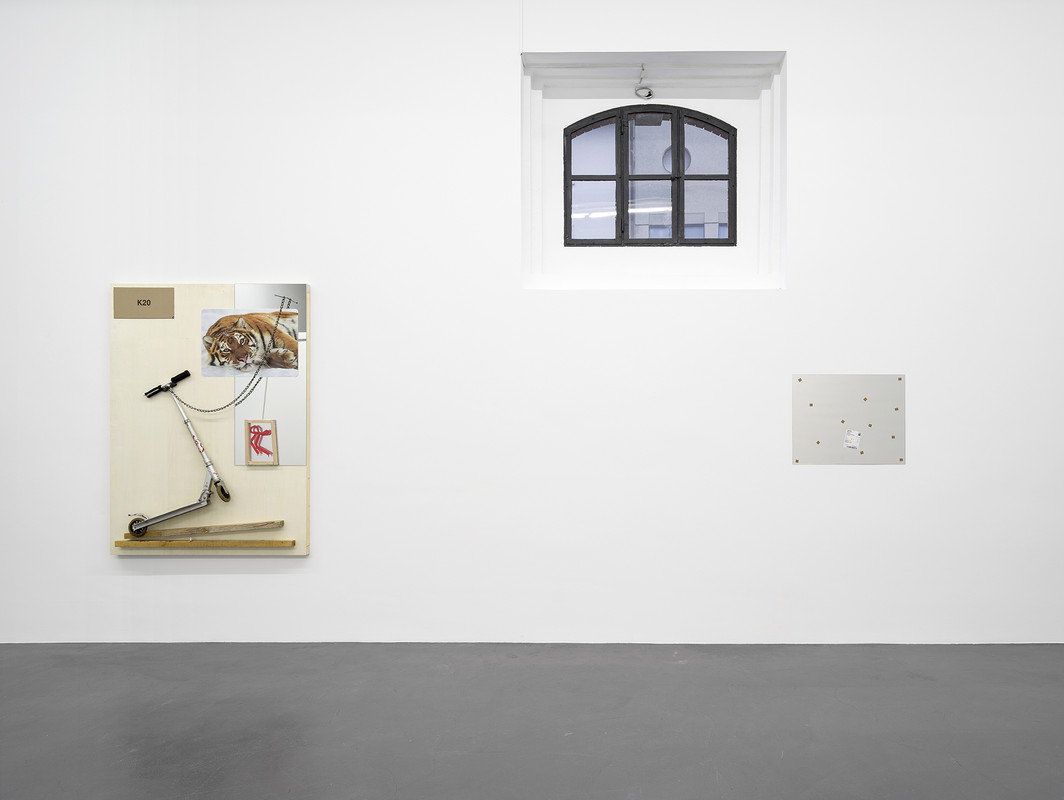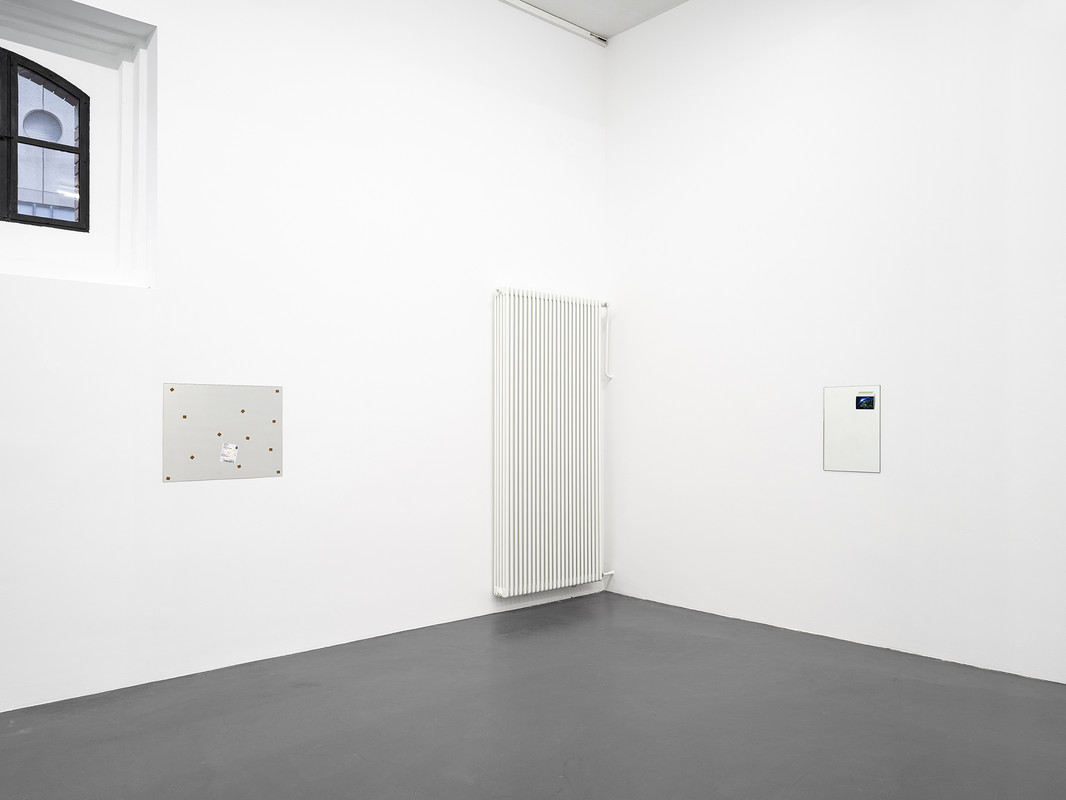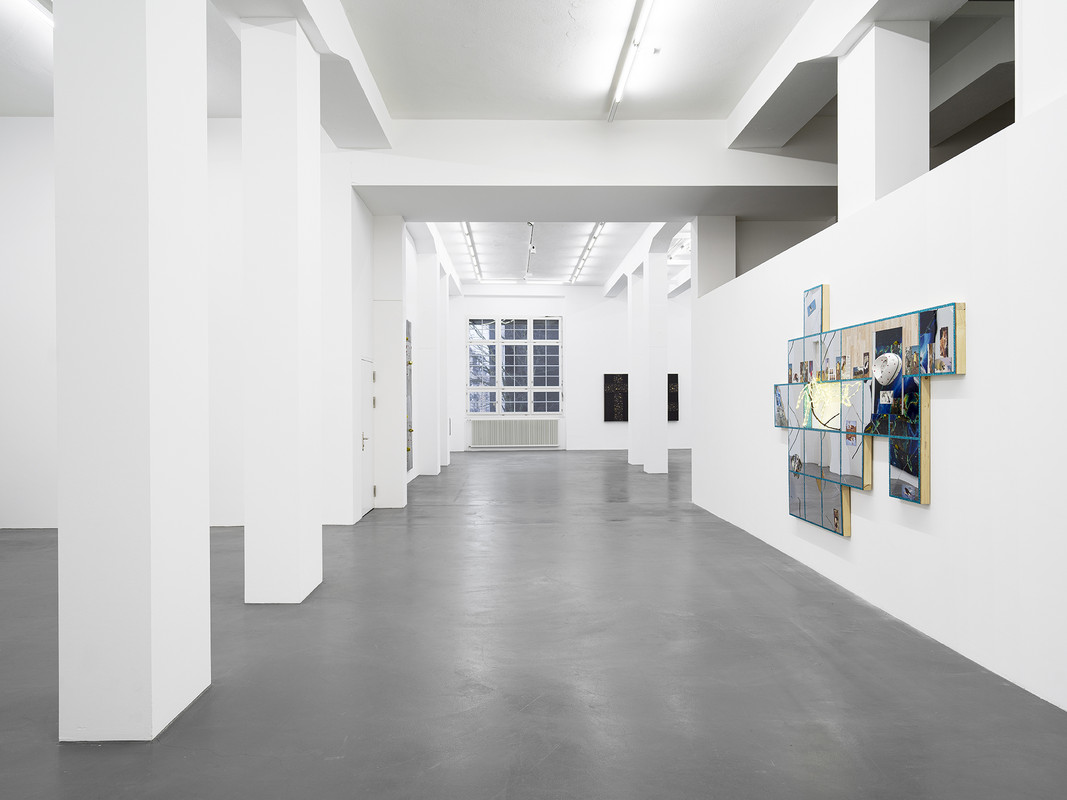Sarah Benslimane
Le monde à l’envers
Opening Friday, February 7, 6–9 pm
February 8 – April 12, 2025
Everything, all at once. Dread and whimsy and cosmic and mundane. Sarah Benslimane’s new series of paintings revisits Robert Rauschenberg’s flatbed approach to picture-making by scattering objects and images on a horizontal surface, layering and organizing their relations to each other without a blueprint. Working on all the paintings simultaneously, her process remains open until it is time to secure all the pieces for shipping. Every work goes through oscillating phases of minimal streamlining and baroque excess, during which the base can easily migrate to an outer layer or be replaced entirely. The artist’s choices are less guided by design or discursive considerations than by the feelings these juxtapositions produce.
What Sarah Benslimane aims to visualize is the concurrence of extreme affects that characterizes our age of global catastrophe. To say that our grasp of the world is mediated through the internet is no longer a talking point. We are much further than that. It’s not just in our pockets, it’s not just in our mind’s eye. It has become part of our nervous system. It’s in our flesh. In 1978, David Salle (the most graceful post-Rauschenbergian Combine artist of his era) wrote on Jack Goldstein (the foremost painter of awestruck Cold War dread): “(his) use of images (and he is not alone in this) allows the image to more fully participate in a metaphorical realm, through the circular process of meaning divorcement, theatricalization (needing only the sketchiest lines for the actors to speak), and meaning reinvestment that can come legitimately only through a process of identification of the object with its real use in the life of the mind, that is, with fantasy and emotion. This is primarily a social and critical process, and it echoes a Brechtian methodology. We may actually be approaching in this work the first stages of a new kind of social art derived from a dialectic with culture that is plausibly available to everyone.” (David Salle, Jack Goldstein, Distance Equals Control, Hallwalls, Buffalo, 1978.) Not only has the virtual dematerialization that occurred at the turn of the century deflated the aptitude of images to perform their part in the theater of social emancipation dreamed up by Salle (a transmutation made manifest in the early 2000s works of Wade Guyton, Seth Price and Kelley Walker, where the real and the simulated appear as the many folds of a single continuum), but we must reckon that, today, there may simply be no agora left to stage such a play.
Collective experience is now contingent on private experiences distributed across the media field. Yet, among cutesy cats and fails that border on snuff, subpar figurative paintings, or extreme cooking and politics of all creeds that the algorithms select for our eyes only, the one stream everyone is subjected to is that of apocalyptic calamity: the Covid 19 epidemic, world destabilizing conflicts with a human toll of unfathomable magnitude, repeated climate disasters, AI-driven mass-dehumanization, etc. Ours is an agora made of soundbites that eschew emotional integration, where the real-life terror of people slaughtered thousands of miles away from us is interspersed in a split second with our chuckles and oohs and ahhs, 24/7. The scale of the world and our place within it collapses into abstraction.
Rayan (2025) resembles a sky map. Constructed out of lozenge-shaped bricks of soundproofing foam, the eternally silent vastness of space is illuminated by tiny costume bells whose jingling will forever be muffled. Brighter, more reflective and imperceptibly smaller sections of the sky are made with the same bricks, except that the foam has been left in its original plastic packaging, ready to expand if it were ever opened. Other speckles distantly glistening are produced by tiny screws, and the artist mentions in passing that, for half a second, she was obsessed by the idea that loose pieces of satellites reentering the atmosphere are often mistaken for shooting stars, and that one day all of this metallic clutter circling around the earth will create a barrier that will imperil the very possibility of interstellar travel. Large sections of the painting are left empty, like so many black holes about to engulf its surrounding light. Until, that is, one takes stock of the fact that these pitch-black areas are made of cow skin. The incongruity of the heterogeneous materials that make up the piece (high tech foam, carnival accessories, home fixings, animal products, etc.) generates a gleeful spectacle concomitant with our cosmic projections. Always apparent, this tangible arrangement never tricks the eye. What you see is what you see. Another work, 2025 (2025), uses some of the same materials, soundproofing foam and costume bells, except that this time the bricks of foam are rectangular, and the bells have been disposed symmetrically. The result looks halfway between one of Frank Stella’s black paintings, along with their tense Nazi titles, and an architectural panel inside a Brutalist house of worship, bearing two crosses, one of them upside down. If the aggressive monumentality of these paintings exploits the toolbox of a number of American Picture and Neo Geo artists (in the case of 2025, late 1980s Robert Longo abstractions come to mind), their do-it-yourself hobbyist aesthetics undercuts the spectacle of capital and Empire, shun any kind of fascination contingent on fetishistic impulses.
Le Monde à l’envers (The World Upside Down, 2025) utilizes rolls of wallpaper printed with a digitally rendered motif of Earth seen from space. Within each of five horizontal strips stacked on top of each other, the contours of the continents and the borders between countries have been redrawn, cut and remodeled, coldly. The brutality and drama of such a gesture are compounded by the fact that the earth is pictured at night, and speckled with bright red glass beads, that might as well be fires, large enough to be seen from the stratosphere. This is a picture of interstellar warfare, albeit one seen on the walls of a cheap nail salon or a provincial mall, where one would expect to find such tacky wallpaper. The beads also recall the little red dots on the maps that accompany explanatory wall texts in a historical museum, while small wooden crime scene markers scattered on the entire surface of the painting remind us that the planetary violence it intimates is as mundane as can be. These are works that, literally, reach for the sky. The shifting of the scale of the terror that pullulates in our very cells to a cosmological high ground and back disenchants the world. This process is hyperactive, jubilant, and disrupts our state of awestruck stupor. There can be no higher political mandate for art.
– Fabrice Stroun

